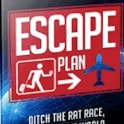
when I read about it on the Amateur Traveler’s Facebook page. I have been interested in the First World War since reading a book as a child, the title long since forgotten, that talked about the poilus, the 40 men or 8 horses railway wagons, and, my favorite, good Germans vs. bad Germans. The ‘good’ Germans were from places like Texas and Pennsylvania, where, at that time, immigrant families still spoke German at home. The bad Germans were from that other place. I was also interested because my paternal grandfather was a WWI veteran, and had served in the 165th U.S. Infantry Regiment, formerly known as “The Fighting 69th”, and was in most of the major battles that the U.S. Army fought, and had gained his American citizenship as a result of that service, as happened for many men. He was an Irish immigrant and chose to fight for the USA instead of for the English crown.
My grandpa’s medal from WWI
This book hits all of those topics, and more, and does so splendidly and in great detail.
The book covers the US involvement in the Great War from beginning to end, from the agonizingly slow buildup of the army, which had few men and fewer officers prior to the war, and almost no modern equipment. It covers how quickly the US Navy was able to participate when war was declared, although limited by the fact that the Navy favored battleships when what they now needed were anti-submarine vessels. Also how impressed the British were when the first US destroyers arrived. The commander was asked how quickly they could be ready to commence anti-submarine activity. The answer was, as soon as we refuel.
A unique thing about this book is that it features the locations where the events discussed occurred, and shows you photos of what’s there, when possible. Also, we get directions as to how to get to those sites, what can be seen there, and what the soldiers might have seen at the time. There are a surprising number of WWI-related sites in the United States. For example, I live near Dallas, and the closest airport is Love Field, which was built as a WWI training facility. Until a recent facelift, it looked like one. Camp Bowie Boulevard in Fort Worth is not directly named after Jim Bowie but after Camp Bowie, a training base during the war. I have been to at least a dozen other facilities on the East Coast during my service in the Coast Guard that I did not know dated back to the Great War.
In 2014 my wife and I were in Paris and I inquired about tours to the WWI battlefields, and there just wasn’t a lot. And for the American battlefields, nothing. The interest is mainly in WWII, which is understandable. We’re much closer to it than to WWI, and it was a larger conflict. But I wish I had read this book before we took that trip in 2014 – we would have known how to get out there and what to see.
While I consider myself somewhat of a history buff, I learned something new on virtually every page of this book. I had not known, for example, that the poet Joyce Kilmer, who died in the war, was in my grandfather’s regiment. I had not known that F. Scott Fitzgerald was known as the worst second lieutenant in the Army and that for a time his commanding officer was a guy named Dwight Eisenhower, whom you may have heard of. I learned of a meeting of Douglas MacArthur and George Patton on a battlefield, where during their discussion the Germans dropped shells all around, and neither of them had enough sense to take cover.
But mainly I learned how hard the doughboys had it “over there”, and what a great job they did. This book details their successes and failures and discusses how much respect the French, British, and, eventually, the Germans had for the big Yanks in their over-strength divisions. American divisions had double the size of the European armies. Much attention is paid to how hard US General Pershing tried to keep the Americans together as a unit, and not allow his men to be funneled into British or French units as replacements. He really made some people mad but he would not do it, although he would lend a division or two at times to help out when necessary.
Finally, I want to mention the treatment that the Buffalo Soldiers – African-American units in a then-segregated US Army, received. Those who were attached to US units were treated miserably, poorly led, and given no respect, and no support. But others were attached to French units and performed magnificently. I had no idea about any of that.
The First World War is not as well known in America anymore, almost as forgotten as the Korean conflict. But let me tell you, the French remember, and they remember what the doughboys did. If you go to the Army Museum in Paris, you will probably see a few people in the World War II section (although I recommend you go there) but the WWI section will be crowded. The day we were there, the exhibit rooms were full of French school children, all eager to learn about their history. I wish we were as well.
- Search for Great Tours HERE
- Get a Car Rental
- Buy Travel Insurance
- Book Your Accommodation HERE

 Book Review: “Escape Plan – Ditch the Rat Race, Discover the World, Live Better for Less” by Mark Mason
Book Review: “Escape Plan – Ditch the Rat Race, Discover the World, Live Better for Less” by Mark Mason Book Review: “The Ultimate Guide to Frequent Flyer Miles” by Travis Sherry
Book Review: “The Ultimate Guide to Frequent Flyer Miles” by Travis Sherry Book Review: “Solo Traveler’s Handbook” by Janice Waugh
Book Review: “Solo Traveler’s Handbook” by Janice Waugh Book Review: “The Bike Touring Survival Guide” By Friedel and Andrew Grant
Book Review: “The Bike Touring Survival Guide” By Friedel and Andrew Grant
